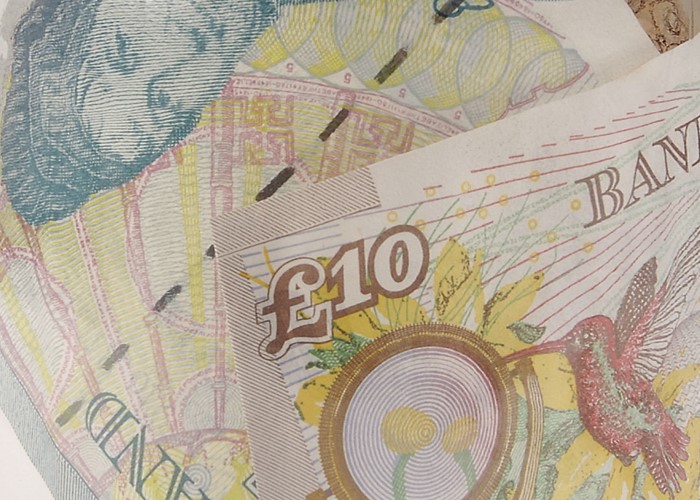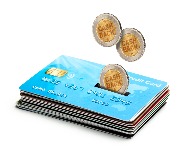Why savings rates are better this year

Jane Baker explains why today's seemingly ultra low rates on savings accounts aren't as bad as they look.
Are you saving harder than ever? If not, why not? Don't you know there's a recession on?! Those of you who don't have a savings cushion to fall back on could be particularly financially vulnerable if you're unlucky enough to lose your job.
But if the terrible rates on savings accounts are putting you off, I'm going to explain why that's not the right way to look at things.
Purchasing power
It's all to do with the purchasing power of your savings. When inflation is high and the price of everyday goods and services is rising, your cash won't stretch as far. But when inflation is low - as it is today - the same level of savings will buy more.
In other words, seemingly low savings rates aren't quite as bad as they look. In fact, in a recent article in the Times, financial data analyst, Moneyfacts claimed that the real return on savings is now at the highest level for 18 years.
Inflation and your savings
Low inflation or deflation - where the price of goods is falling - is good news for your savings because it means your returns are rising in real terms.
The latest annual figures show that the Consumer Prices Index (CPI) - the government's favoured measure of inflation - was 1.8% in the year to July. At the same point last year, the CPI stood at 4.4%.
Meanwhile, the Retail Prices Index (RPI) remains in negative territory at -1.4% in the year to July, while 12 months ago it was far higher at 5%.
So, what does all this mean? Well, according to the CPI measure, prices are now 1.8% higher than they were 12 months ago. But, the RPI tells us that deflation is still digging it claws in with prices recorded at 1.4% lower than they were a year ago.
CPI versus RPI
But why are the CPI and the RPI telling us two different stories? Well, the CPI excludes mortgage interest payments, but the RPI doesn't. And since many borrowers are now enjoying cheaper mortgage repayments in today's low interest environment, the RPI has been pushed down.
If you're a mortgage borrower, the RPI may be a more accurate measure of inflation for you. Using the RPI, your savings are now worth 1.4% more in real terms, because the average price of the goods you want to buy is 1.4% less than it was a year ago.
And luckily for savers, since the RPI has fallen so dramatically over the last year, the real return on savings has enjoyed a real boost. Just take a look...
August 2008 versus August 2009 - easy access savings accounts
|
Rates |
August 2008 |
August 2009 |
|
Base rate |
5% |
0.5% |
|
Consumer Prices Index CPI (July) |
4.4% |
1.8% |
|
Retail Prices Index RPI (July) |
5% |
-1.4% |
|
Top easy access account rate |
6.55% |
3.3% |
|
Real return of top account after CPI inflation |
2.15% |
1.5% |
|
Real return of top account after RPI inflation |
1.55% |
4.7% |
As you can see from the table, in August 2008 the best buy easy access savings account paid a rate of 6.55%. At that time the CPI was 4.4%, while the RPI was 5%. This meant the real return on savings once inflation had been deducted was 2.15% based on the CPI and just 1.55% based on the RPI.
There's no question the relatively high rates of inflation last year were responsible for dragging down the return on savings in real terms.
But inflation is running at much lower rates now. It's true the nominal returns on savings are far below where they were a year ago. This month the best buy easy access savings account is only paying a nominal rate of 3.3%. On the surface, this looks much worse than the best rate 12 months ago of 6.55%.
But, using the CPI this month, the real return on the best buy is eroded to just 1.5%. This is 0.75% below the best real return in August 2008 of 2.15%. But given that the difference in nominal rates between the two is 3.25%, it's encouraging that the difference in real returns is only 0.65%.
So savings rates today don't look quite so appalling, do they?
Savings rates are better this year
Even better, once RPI inflation has been factored in instead of the CPI, it's a completely different story. The real return after RPI inflation was 1.55% back in August 2008. But now it's a lot higher at 4.7%. This means, the best buy account now pays a return which is 3.15% more than the best buy last year in real terms even though the nominal rate is 3.25% lower.
What I'm basically saying is that it's not all about the rate you see advertised. You need to take other factors into consideration, especially inflation. I hope I've convinced you that saving is still worthwhile. So, let's have a look at where to put your cash next.
Best buy easy access accounts
The account I've used in the table is the Coventry Building Society 1st Class Postal Account with a rate of 3.3% on savings of £1,000 upwards. This rate includes a bonus of 1.3% for the next 12 months.
Bear in mind that with this account you can only make four penalty free withdrawals a year. If you dip into your savings more regularly than that, all subsequent withdrawals for that year will be charged 50 day's interest.
If you're looking for a more convenient account with easier access, my top choice would be the Egg Savings Account which pays 3.25%. This includes a 2% fixed bonus which means you're guaranteed a minimum return of 2% for the next year.
So if you've been skipping saving this year, or you have allowed your cash to languish in a rubbish account because you thought there was no point moving it somewhere new, why not open one of these best buys now? They're much better than they seem!
Compare savings accounts at lovemoney.com
More: Save now or face the consequences | Eight smashing savings accounts
Most Recent
Comments
-
Your personal inflation rate depends upon what you spend your money on. food and fuel (gas and electricity) have been rising fast. the poorest in society are limited to saving £6,000 or their benefits are cut. ths is due to be raised "sometime this autumn"; that will help pensioners plan their finances; the chancellor has been very exact there! The boost for savers in 2010 for people on benefits saving regularly is also ambiguous. When will it start and what's the catch? Where do the poorest members of society find the money to save? Is this to cut down expenditure on the social fund perhaps? the government pumped 170 million into "talking therapies" for people with psychological problems like anxiety and depression and at the same time tried to force GP's to cut the prescribing of benzodiazapines and otehr drugs. All the 170 million went into Cognitive Behavious therapy; which has been described by some learned psychologists as "brain washing". The government also tries to brain wash people into thinking all claimants are scroungers and cheats with television advertising and shop your nieghbour campaigns. The real cheats are the members of parliament claiming expenses fraudulently and these need criminal investigation. We are sick of cheats, politicians, CEO's awarding themselves fat bonuses, speculators huddled together in Starbucks peddling rumours of the next speculative equity everyone can make a fortune on! the London Scool of Economics advises the government on economics, if they are so good; why didn't they advise them to regulate the banks and stop the takeover of our energy industry by foreign companies? When will the Human Rights Act 1998 actually start to be policed and enforced? The old, the sick and disabled are paying the price of greedy speculators with garbage interest rates. That is the reality.
REPORT This comment has been reported. -
Is the writer related to Gordon Brown?
REPORT This comment has been reported. -
Oh, and as to the accuracy of RPI and CPI, when they add a huge solitaire diamond engagement ring to the CPI measure - well that really reflects the average Joe doesnt it? Given the tiny fraction of couples that actually get married nowadays, how many of them can afford large diamonds? Oh yes - that would be the fat cat bankers and politicians p***ing themselves laughing at the rest of us poor schmucks
REPORT This comment has been reported.
Do you want to comment on this article? You need to be signed in for this feature









01 September 2009